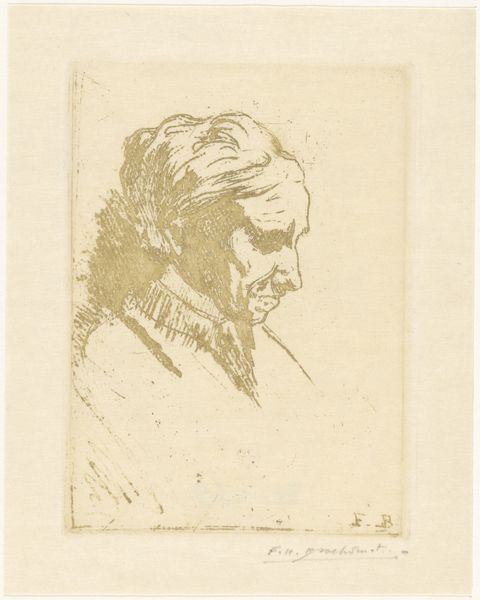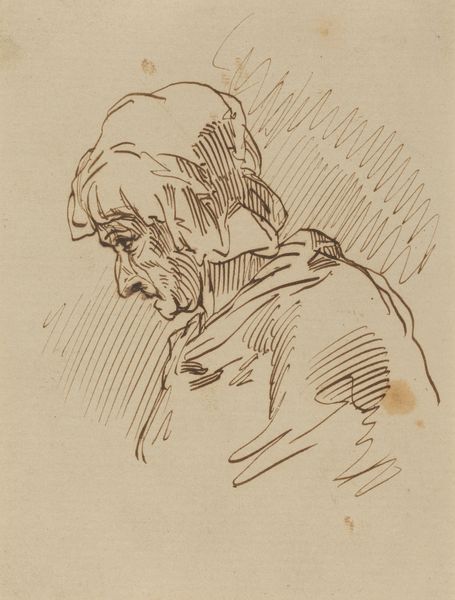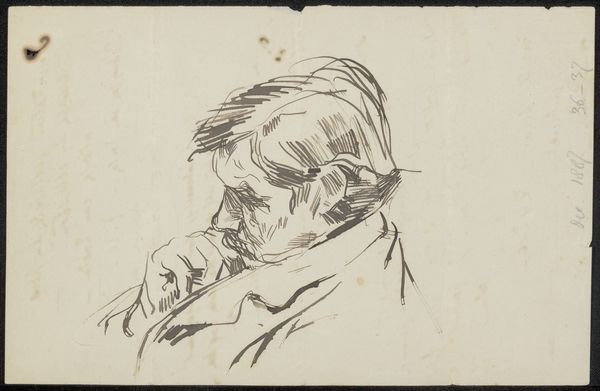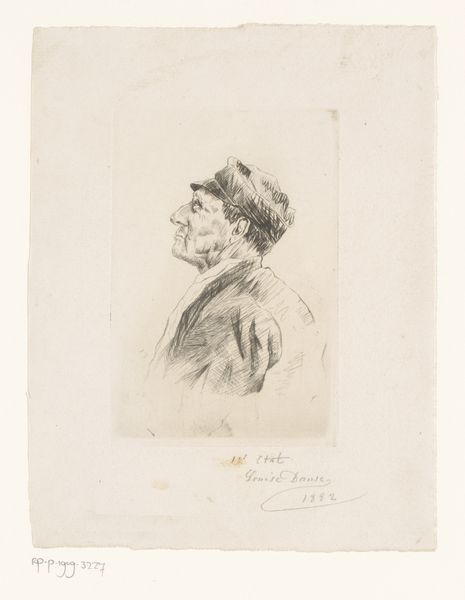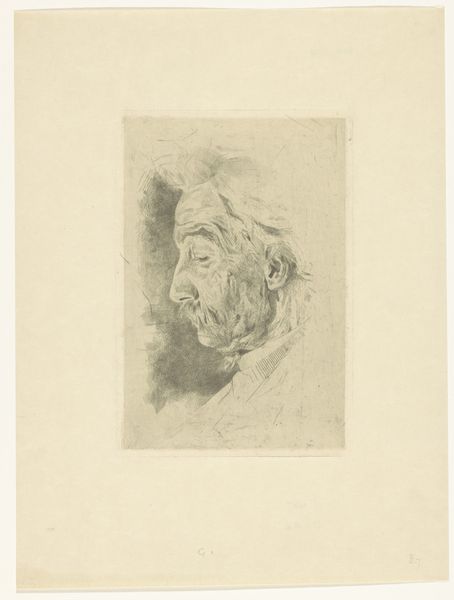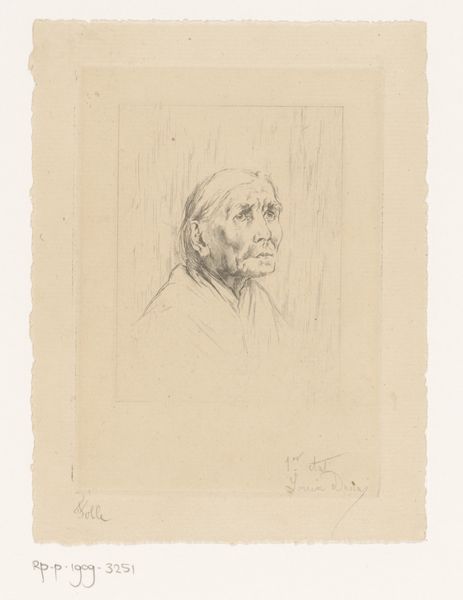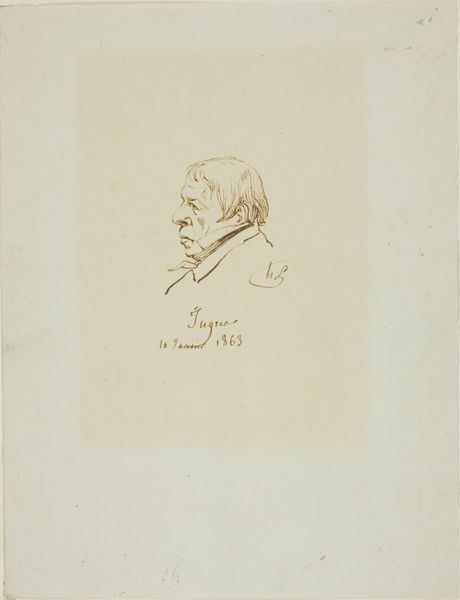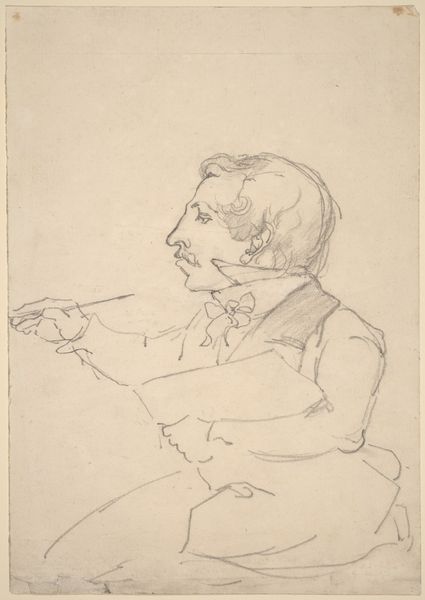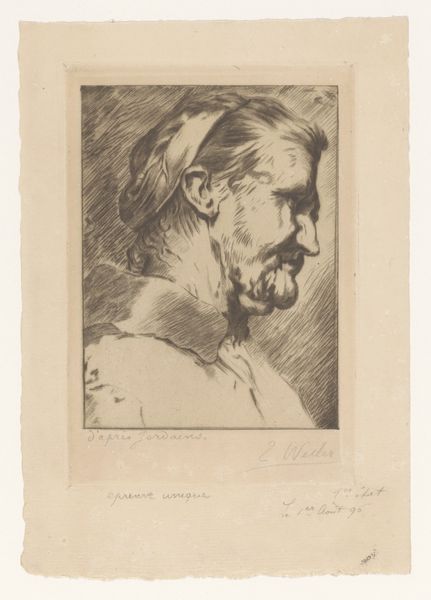
drawing, ink, pencil
#
portrait
#
drawing
#
self-portrait
#
figuration
#
ink
#
pencil
#
line
#
profile
Dimensions: height 175 mm, width 220 mm
Copyright: Rijks Museum: Open Domain
Curator: Immediately I see frailty, etched in those quick, nervous lines. The angle emphasizes his downcast gaze, a weariness perhaps? Editor: Here we have, from sometime between 1834 and 1911, Jozef Israëls' "Head of an Old Man, in Profile," currently held at the Rijksmuseum. It’s a drawing rendered in pencil and ink. A stark and economic portrayal, wouldn't you agree? Curator: Definitely. It strips away any superficiality, diving right into the essence of age, the marks life leaves. That downward glance isn’t just about physical wear, is it? It hints at the weight of experience, perhaps disappointment. Old age in art often stands for wisdom but here, wisdom is joined with profound disillusionment. Editor: Jozef Israëls made a name depicting the lives of ordinary people, particularly the hardships of fishermen and peasant communities. I can’t help but wonder how social empathy translates here, onto his own rendering? I'm intrigued. Was he using himself as a model? Curator: Indeed. The face has the clear, lined characteristics of an aging man. It reads almost like a symbolic map of inner life, mirroring broader societal hardships within the microcosm of an individual's face. We carry the stories of communities on our faces; they tell silent narratives. It has that melancholy typical for Romantic Era. Editor: Yes. These are portraits of resilience. Israëls seems deeply engaged with how institutions, cultures, societies represent its older generations. Are they honored or discarded? In terms of composition, he does use the economy of the medium. A potent social commentary embedded in delicate lines. Curator: Exactly! This isn't merely an exercise in skillful rendering. It's about encoding history in wrinkles, documenting emotional experience in the shadows under his brow. Editor: Looking at the drawing more, and acknowledging the context that the old age experience for those with scarce economic means, its statement can’t be easily dismissed as the isolated musings of an artist, but one informed by those conditions. Curator: It urges us to consider how memory, cultural memory, resides in the faces around us. Editor: Yes, it becomes a study in the public role of representing aging and marginalisation with empathy and realism. Thanks to Jozef, there is much to contemplate through his visual representations.
Comments
No comments
Be the first to comment and join the conversation on the ultimate creative platform.
